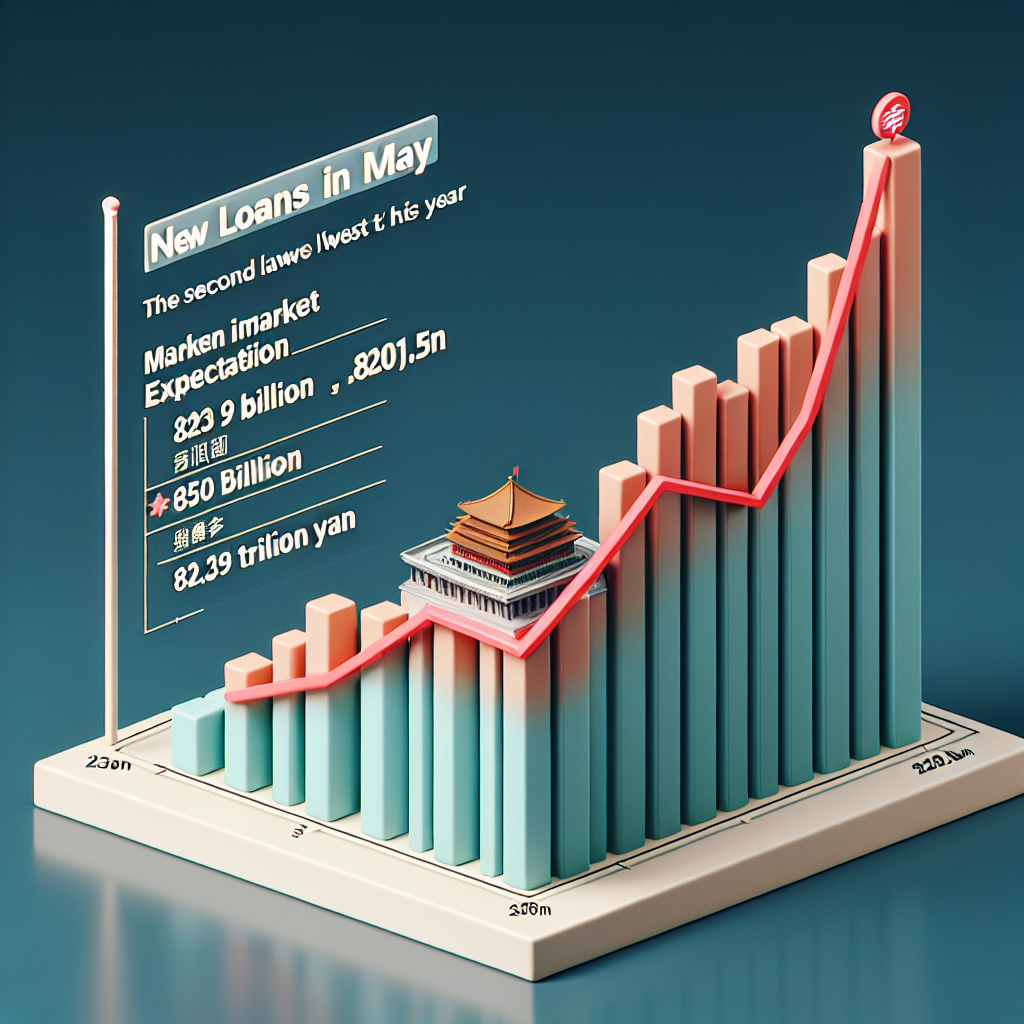The People’s Bank of China announced that new loans in China in May amounted to 620 billion yuan (RMB), making it the second lowest so far this year and falling below the market’s expected 850 billion yuan. In May, social financing increased by 2.29 trillion yuan, also coming in lower than the expected 2.3 trillion yuan.
On June 13, the People’s Bank of China website published the report on the scale of social financing and statistics for May 2025, as well as the financial statistics report for May 2025.
In the first five months, new loans reached 10.68 trillion yuan. The new lending in May was calculated to be 620 billion yuan, lower than the market expectation of 850 billion yuan, showing a decrease of 34.73% compared to the same period last year, but an increase from the 280 billion yuan in April.
Breaking it down further, household loans increased by 54 billion yuan in May, an annual increase of 21.7 billion yuan. Short-term loans related to consumption decreased by 20.8 billion yuan for the second consecutive month, while medium- to long-term loans related to mortgages increased by 74.6 billion yuan, an annual increase of 23.2 billion yuan.
In May, new loans to enterprises and institutions amounted to 530 billion yuan, a 20% decrease from April’s 670 billion yuan, marking the smallest monthly increase so far this year. Compared to the previous year, the increment in corporate loans also dropped by 28.37%.
By the end of May, broad money supply (M2) grew by 7.9% annually, lower than the expected 8.1%, while narrow money supply (M1) increased by 2.3% annually, surpassing the expected 1.7%.
Despite the rate cuts and reserve requirement reductions by the central bank in May, new renminbi loans to businesses continued to decline annually. Analysts believe that although monetary policy has become more accommodating, the uncertain economic outlook has cast a lingering negative impact that is hard to dispel.
In the first five months of this year, the increment in social financing amounted to 18.63 trillion yuan. Calculated accordingly, the increase in social financing in May was 2.29 trillion yuan, falling short of the expected 2.33 trillion yuan.
According to Hong Kong’s Economic Daily, Xing Zhaopeng, an economist from ANZ Bank China, pointed out that the credit data for May continued the downward trend from April, with a significant proportion of government financing within social financing and government spending failing to stimulate the financing demands of the real economy.
Zhang Xu, Chief Bond Analyst at Guotai Junan Securities, attributed the factor of local government implicit debt replacement as one of the reasons affecting the growth of credit in May. The year-on-year decline in credit also reflects the weakening of effective demand, mainly due to external impacts such as US tariffs.
The Wall Street Journal noted that the lower-than-expected new loans in China in May were influenced by escalating tensions in US-China trade relations and the prolonged downturn in the real estate sector, which continued to inhibit borrowing intentions.
Ming Pao cited Wen Jiawei, Chief Economist and Strategist at Dashin Finance Group, stating that as of the end of May, social financing stock rose by 8.7% annually, maintaining a consistent growth rate from April. Though credit growth stabilized from a low point in the fourth quarter of last year, continuous rate cuts and reserve requirement reductions on the mainland have limited effectiveness in driving loan rebounds. Concerns over the economic outlook have led companies to be more cautious in lending, with many facing overcapacity issues and limited willingness and ability to finance expansions. The slower recovery in the real estate sector has also failed to boost loan demand.
Previously in April, new loans in China amounted to 285 billion yuan, a sharp year-on-year decline of 61%, marking the lowest level in the past 10 months and indicating a sluggish demand for borrowing in the Chinese economy.

